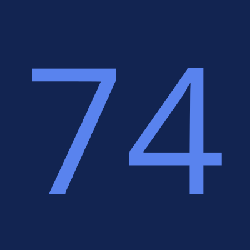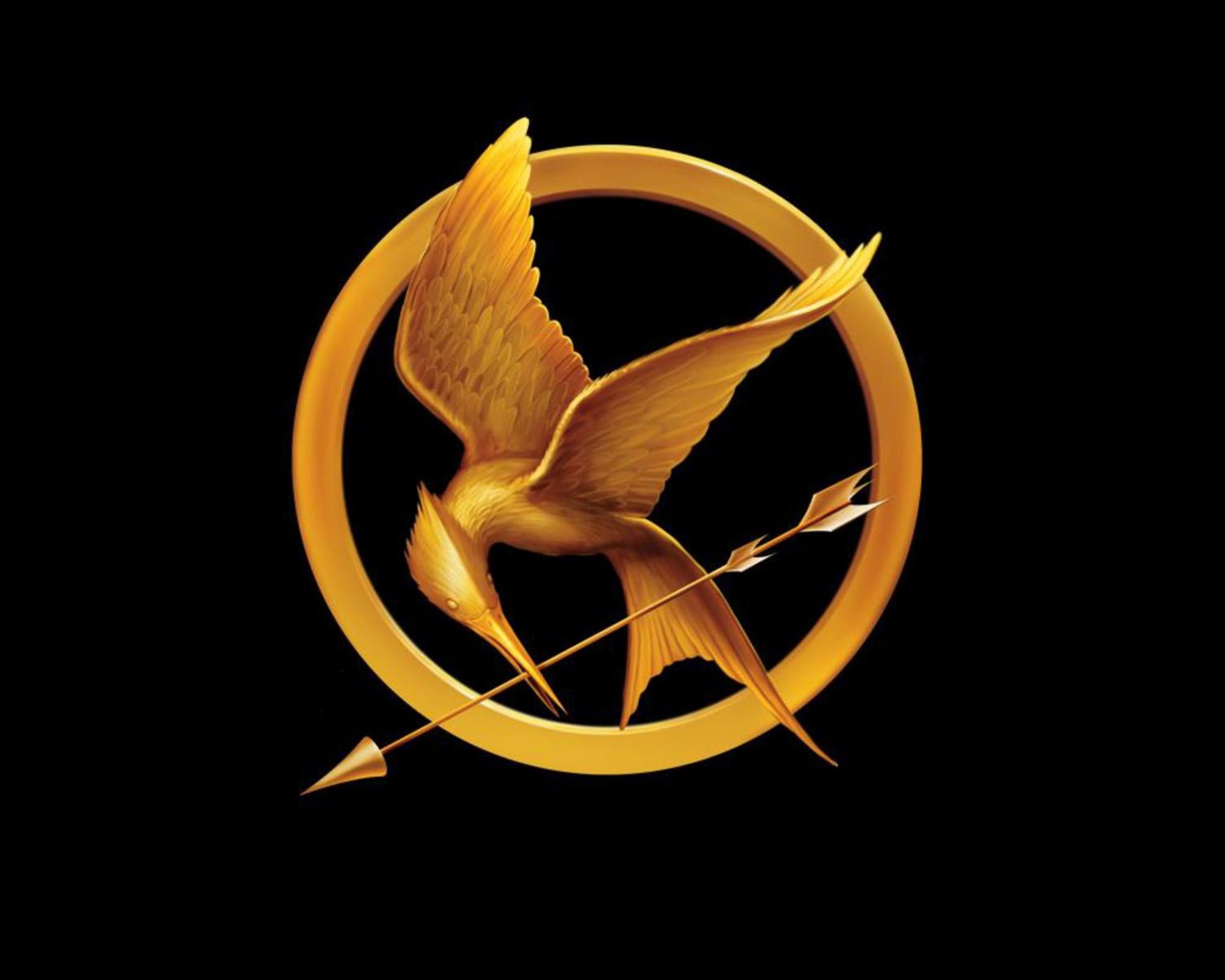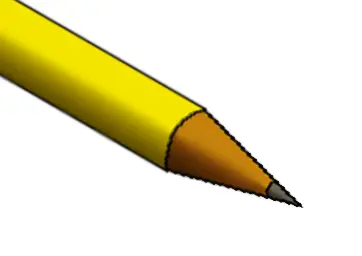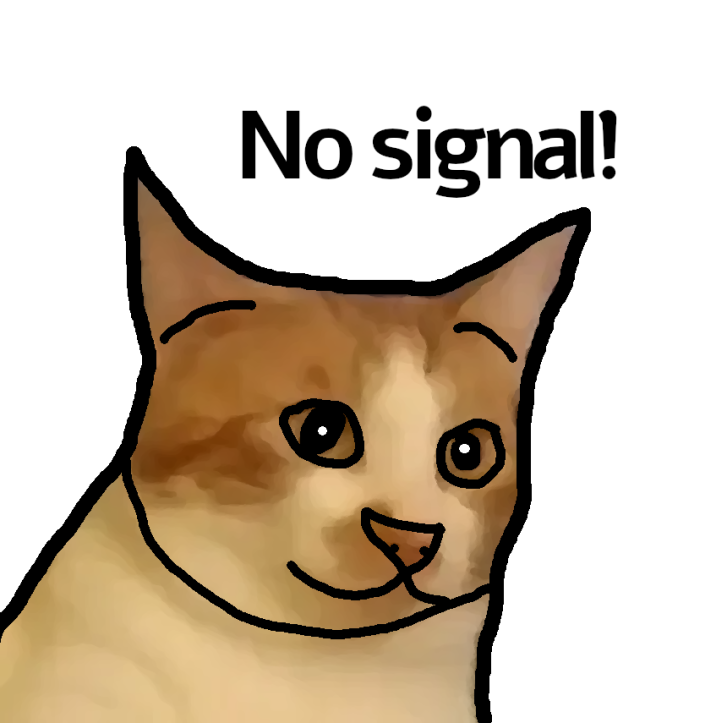I understand why this is wrong (order of operations dictates the division happens first, so it’s really 25 - 1 = 24), but why is it funny? I don’t mean “This isn’t funny,” I think I’m just missing the joke.
4! Is meant to be 4 factorial. 4! = 4 x 3 x 2 x 1 = 24
Aha! Got it, thank you so much.
And here I was thinking I was still decent at math. I got bamboozled…
Everybody forgets the factorial…
I always get a chuckle every time someone posted this in an unrelated comment.
Especially when we have never seen that shit before
Or if you don’t know order of operations, then you probably also don’t know factorials, so 20 / 5 = 4
The fuck is a “factorial”? They didn’t teach me that one in high school math and I couldn’t afford college.
Im sorry your highschool curriculum failed to teach you. I learned factorals in jr highschool
4 factorial (written as 4!) is 4•3•2•1
I think this example explains it perfectly lol
Edit: using • instead of * to avoid markdown
Just a small correction in case you didn’t know, but your answer shows as 432*1 because Lemmy formats text wrapped by * as italic, so it thinks you want to italicize the 3. You meant to write 4*3*2*1 (written as 4\*3\*2\*1). This is because \ is an escape character that tells lemmy not to take the * as a formatting character.
Right, i sometimes forget about markdown lol. Yeah, it obviously is 4•3•2•1
Is a factoral just 1X Because yeah i don’t think I learned that either, but I was taught exponentiation. Whats the value of factorals?
Factorial means n! = (n)(n-1)(n-2)… etc. down to 1, where n is a positive integer. It’s used to calculate the different number of configurations of a set of elements, mainly in combinatorics.
Like if you have four different objects and you want to know how many different configurations you can order them in, you have four choices for the first object, then three for the second, then two for the third, then one for the final slot. So the answer is 4 x 3 x 2 x 1 = 24 = 4!.
What’s the point of factorials?
the most tangible and direct application is how many different ways you can order x many items.
eg. how many different ways can you order 3 items?
let’s say you have these 3 items: 🍏🫐🍒
the first one can be any one of the three, so you have 3 options. that’s 3 different ways to start your order. let’s write that down:
3
now for the second one. whichever one you picked for first position will be unavailable, so you’ll have 2 options this time. this is true for each first pick separately, so you multiply the possible number of first picks by the possible number of second picks:
3 x 2
now for the third item, since two of the three are already picked, you only have one left, which means not much to choose. you just multiply the 1:
3 x 2 x 1
of course multiplying by 1 doesn’t change anything but as we mentioned there was no option this time, once you pick the second fruit the third is also auto-picked, so the third item doesn’t add to our number.
so the final answer seems to be:
3 x 2 x 1 = 6
is that true? might feel like there should be more ways but let’s test it; can’t be that complicated:
- 🍏🫐🍒
- 🍏🍒🫐
- 🫐🍏🍒
- 🫐🍒🍏
- 🍒🍏🫐
- 🍒🫐🍏
here you go. you can extrapolate this logic to any number. four items would’ve followed the same sequence starting with 4 and have 1 less option with each pick, so 4 x 3 x 2 x 1. and that’s also 4!
There are lots of applications, so I’ll give you three
Factorials are used in the Taylor Series to approximate trigonometric (sine, cosine, etc) and the exponential function. This can help speed up calculations.
In probability and statistics, if you want to find how many different ways a deck of cards can be shuffled, the answer is 52! Because the first card can be any of the 52, the second can be any of the remaining 51, and so on until the last card. Building upon this concept results in ways to model data like the binomial distribution , which is simply “how many successes will i get if i do this trial a certain number of times”. E.g. If I flip a coin 100 times, how many times will it be heads?
In computer science, the complexity of a program is compared to functions like the factorial, exponential, quadratic, etc. to visualize it’s performance given the size of the input, n. E.g. a program of linear time complexity is denoted as O(n), and as n increases, we expect the time for the program to finish to increase linearly. For a factorial time complexity, O(n!), we expect the time to complete to increase a lot compared to O(n)
Makes things shorter.
In the applications mentioned by other people, you run into calculations that would look really messy and confusing. Things like 5•4•3•2•1 can be shorted to just 5! Imagine writing the full version of 123!
You didn’t learn factorials in high school?
In High School education, Factorials are generally part of the curriculum, but they’re one of those things you get one section on, it shows up on one test, then in common usage, you never see it again. In many schools, someone could have been out for a day, gotten two answers wrong on a test, and never have known it. Then in my school, unless you were heading on a math track, you’d hardly even touch Calculus to see it actually used anywhere.
4! Is a factorial which means it’s 4 x 3 x 2 x 1 = 24
Totally missed that. Thank you.
4 factorial
The exclamation point denotes the factorial function. 4! = 4 ⋅ 3 ⋅ 2 ⋅ 1
I see no one has explained yet, so I’ll give it a shot. He is excited about math, and that needs to be encouraged.
The exclamation point makes it right. The formula, when worked with proper order of operations, equals 24, which is equal to 4 factorial (4!) 1 * 2 * 3 * 4=24
Cause math people has a weird humor?
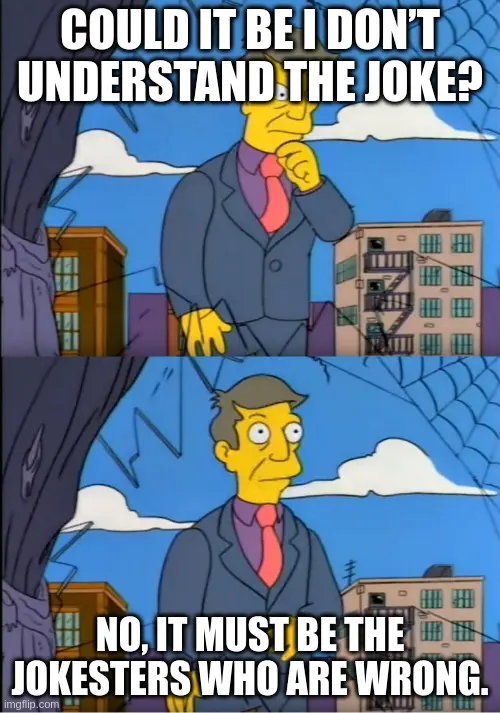
The exclamation point in the answer, from a math perspective, makes it 4 factorial: 4 x 3 x 2 x 1 = 24, which is the correct answer.
Could it be you’re responding to the wrong person?
Indeed, it could.
Sorry to said that, but you made my guess quite real.

Best math meme so far.
deleted by creator
Unexpected expected factorial
deleted by creator
Except it is correct. 4!=24
deleted by creator
Comment section full of people looking for an opportunity to argue
No it isn’t
Yes it is
Wait, will this be the 5-minute or the half hour?
“I’m sorry, I cannot continue to argue, unless you pay.”
You’re not arguing, you’re just being contrary!
Hah, joke’s on you, I just need 4!
WHAT!
ASCII hack failure of language. Even in mathematics, ! has multiple meanings like with Boolean NOT. We need a science, math, and language reformation to remove non intuitive narcissistic names, and implied contextual meanings.
You might find Lojban interesting if you are not already aware. (I haven’t tried to learn it myself, I just know it exists)
Relevant xkcd
If someone wants to start a Lojban pun community, I would definitely subscribe just to learn about Lojban.
Although, if no one posted in the community, I wouldn’t be sure if it was a perfectly logical language or the community was just dead.
.i la lojban cu mutce lo ka smuske tinsa .i ku’i ly. na logji prane pe’i .i loi jbopre cu piso’iroi da’asnu lo ka prane nitcu .i ru’a lo klamburi cu na’e lojbo ka’u .i jy. xebni lo malgli .iseju lo nu lojbo klamburi zbasu cu nandu ba’a jeku’i cumki
Lojban is very semantically rigid, but not perfectly logical IMO. Lojbanists often argue about the necessity of logical perfection. I suspect that puns might not be seen as culturally Lojbanic. Lojbanists hate Anglicisms or bits of English leaking into the way they speak Lojban. Regardless, making Lojbanic puns might be difficult but it’s possible.
I believe you mean, “nice pun!”
I’ve never seen ! used for boolean NOT in maths, just ¬. I think ! is something programming languages went for because it’s easier to type. That said, screw (a, b). Is that a (coordinate) pair, an interval, an inner product, some secret fourth thing? Who knows!
Inner products are written as ⟨a,b⟩, no? Fair point on the interval, tho
Ok this is funny
You got the wrong symbol in the headline, it should be >3
Thank God this meme is muted
This is quite possibly the best maths joke I’ve ever seen.
[edit] I guess it still can’t beat the ‘be rational’ / ‘get real’ one.
Clever! lol
for those that didn’t get it: clever factorial = brilliant
Promptly Evacuate Manure Drain And Septic
The answer in the comic is correct. It’s just written in a way to make you as the reader think he’s got it wrong for a second.
The ! operator in mathematics indicates a function called a factorial. Four factorial, or 4! = 4 × 3 × 2 × 1 = 24. Which is the correct answer if you follow the proper order of operations.
Can someone explain to me why this is funny?
So with people who do order of operations incorrectly, you have 25-5 =20 and then divide it by 5 and you get 4.
However the correct answer is 24 since you do the division first.
Where the joke comes in is he states “4!”, which sounds like he is emphatic about the wrong answer. However an exclamation mark is “factorial” which translates to 4x3x2x1… which happens to equal the correct answer of 24.
Ah! :D I like it.
5-5/5 != 4
4 != 24 but also
4! = 24
4! = 5-5/5
5-5/5 != Sandwich
007 will never get this wrong, it’s 4, 24.
